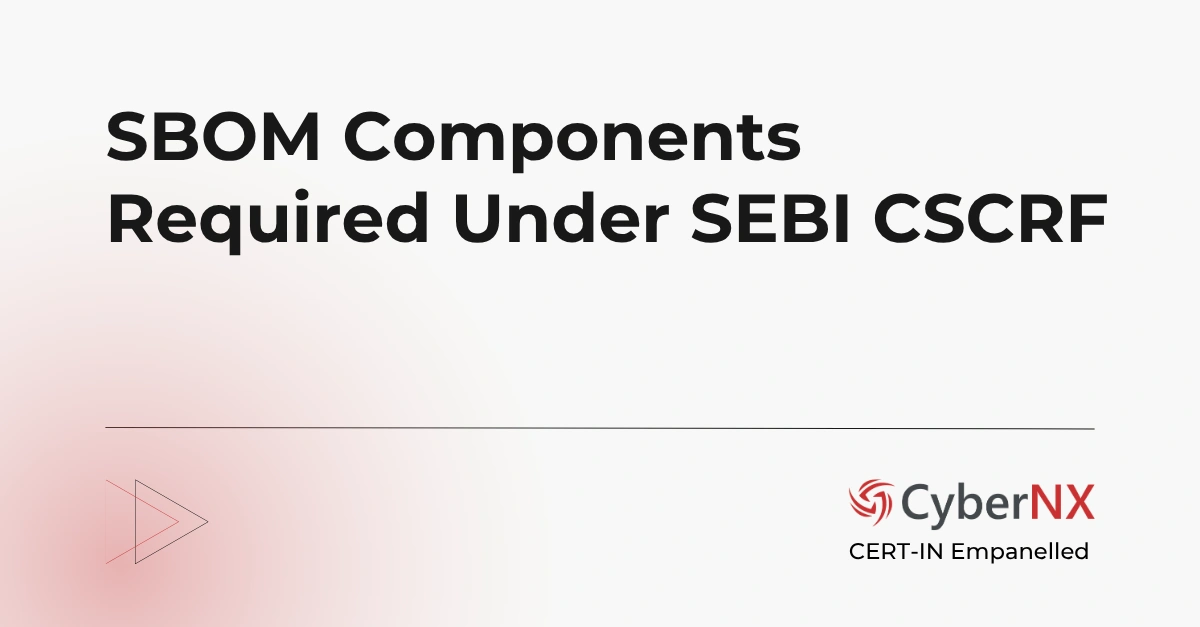In the banking, financial services and insurance (BFSI) sector the software supply-chain is increasingly complex. Legacy systems, third-party libraries, open-source dependencies and vendor-delivered components all add risk.
We know as decision-makers you face pressure: regulatory mandates, scrutiny on vendor risk, and boards demanding transparency. That is why automating SBOM generation and validation for BFSI organisations becomes critical.
In this article we walk through how to move from code to compliance – especially in BFSI organisations – by automating SBOM workflows.
The challenge for BFSI organisations
Look at these staggering stats from Sonatype’s 10th Annual State of the Software Supply Chain Report (2024):
- Software supply chain attacks doubled year-over-year.
- Over 700,000 malicious open-source packages detected.
- A 156% surge highlighting growing OSS risks.
Yet, most organisations remain underprepared.
A WEF Global Cybersecurity Outlook 2024 report found that:
- 54% of organisations lack sufficient visibility into vulnerabilities within their supply chains.
BFSI sector is at major risk. This is because BFSI entities often run a mix of in-house code and vendor-supplied software. Many of these rely on open-source components. Without a clear inventory you can’t assess your software supply-chain risk.
This is where SBOM emerges as a helpful solution to arrest the software supply-chain related problems.
As one expert puts it: “SBOMs are transforming supply-chain security by addressing the need for visibility and accountability, particularly in critical industries.”
In addition, national regulatory guidance affirms what you’re seeing:
- The Indian Computer Emergency Response Team (CERT-In) has emphasised that SBOMs are mandatory for essential services in finance, and must provide real-time component inventory, versioning and manufacturer/vendor data.
- The Securities and Exchange Board of India (SEBI) SBOM requirements under the Cybersecurity and Cyber Resilience Framework (CSCRF) extend to regulated entities including banks, NBFCs and mutual funds.
Manual SBOM inventory exercises are slow, error-prone and quickly outdated. That leaves gaps in vendor governance, patch management and incident response.
Automating SBOM generation
Automating SBOM generation and validation for BFSI organisations streamlines software inventory management. Plus, it ensures every component is tracked, verified, and updated in real time. It reduces human error, speeds up compliance, and strengthens visibility across the entire software supply chain.
1. Integrate into DevSecOps
The key first step is to embed SBOM generation into your Continuous Integration / Continuous Deployment (CI/CD) pipelines. Each build should produce an SBOM in a machine-readable format (for example SPDX or CycloneDX). This ensures you generate SBOMs at scale rather than ad-hoc.
2. Vendor and third-party ingestion
Your SBOM programme must cover not just in-house code but vendor deliveries. Request and ingest SBOMs from suppliers. That gives you end-to-end visibility.
3. Validation and tooling
Generating the SBOM is step one. Then you must validate it. Use Software Composition Analysis (SCA) tools to map the SBOM components to vulnerability databases (CVEs) and licence data. This enables you to prioritise responses.
From SBOM to compliance and security
Having the SBOM is just one part. You must treat it as a live asset:
- Update the SBOM with every patch, dependency update or deployment change. The CERT-In guideline states SBOMs must be updated whenever there is a software change.
- Run continuous monitoring of your component inventory and flag drift.
- Link SBOM data to your vulnerability management and third-party risk programmes.
- Produce audit-ready reports that show the board and regulator you have a mature software supply-chain inventory. In BFSI this strengthens trust with regulators, clients and vendors.
Key benefits for BFSI organisations
For BFSI organisations, implementing SBOM enhances regulatory compliance, vendor transparency, and incident response readiness. Automating SBOM generation and validation for BFSI organisations helps identify hidden software risks early, protecting customer data and maintaining trust in a highly regulated sector.
- Faster incident response: When a new software vulnerability is disclosed, you can instantly check which systems are affected thanks to an accurate SBOM.
- Vendor risk transparency: You understand what your vendors delivered and what you depend on.
- Regulatory readiness: By automating SBOM workflows, you’re better prepared for audits and compliance checks.
- Operating cost reduction: Less manual effort, fewer unknowns and fewer surprises when incidents occur.
Implementation tips for success
Start small by prioritizing critical systems and integrating SBOM tools into your CI/CD pipeline. Establish clear vendor requirements and conduct periodic reviews to ensure accuracy, compliance, and continuous improvement.
- Start with your most critical applications and systems (customer-facing, transaction-heavy, vendor-of-record).
- Choose SBOM formats and tools that integrate into your current DevSecOps stack.
- Define policy: what constitutes a significant change, when SBOMs must be regenerated, how often you review.
- Set vendor contractual terms: include SBOM generation and delivery as part of the procurement process.
- Build dashboards that visualise SBOM health, component age, vendor-delivered inventory and compliance status.
Conclusion
For BFSI organisations the journey from code to compliance via SBOMs is no longer optional. By automating SBOM generation and validation, you regain visibility, control your software supply-chain risk and meet regulatory expectations.
We at CyberNX work alongside your team to design and implement SBOM workflows that align with your business priorities and regulatory demands.
Get in touch with our expert team to explore how we can integrate our advanced SBOM tool into your DevSecOps pipeline, vendor governance process and compliance programme.
Let us help you build the SBOM capability that matches your growth ambitions and regulatory needs.
SBOM generation and validation for BFSI organisations FAQs
What SBOM formats should a BFSI organisation use?
BFSI organisations should adopt standard, machine-readable formats like SPDX and CycloneDX, which are widely accepted for regulatory and operational use. These formats enable seamless automation, interoperability, and tool integration across security platforms. Using standard formats also helps demonstrate compliance readiness during audits and regulatory reviews.
How often must SBOMs be updated for compliance purposes?
An SBOM should be updated every time a code change, patch, or new deployment occurs to ensure accuracy. Static or outdated SBOMs defeat their purpose in maintaining visibility. It’s also best practice to perform quarterly reviews or updates after major software releases to align with continuous compliance and security monitoring.
Does SBOM automation only apply to in-house code?
No. SBOM automation must extend to both in-house and third-party or vendor-supplied software. Modern BFSI environments depend heavily on external libraries and SaaS tools. To maintain complete software supply chain visibility, organisations must also ingest and verify vendor-provided SBOMs as part of their security and compliance process.
What are the technical risks if SBOM generation is not automated?
Relying on manual SBOM creation can cause incomplete or outdated component inventories, making it difficult to track vulnerabilities or respond to incidents quickly. This gap increases the risk of supply-chain attacks, regulatory non-compliance, and delayed remediation efforts. Automation ensures that SBOMs remain accurate, timely, and actionable across your software ecosystem.






